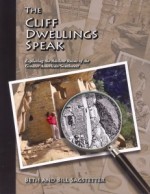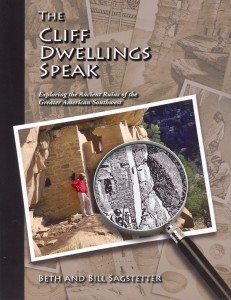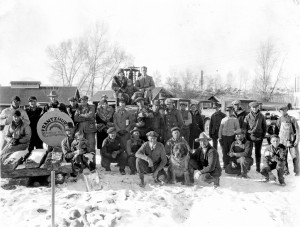The Cliff Dwellings Speak: Exploring the Ancient Ruins of the Greater American Southwest
By Beth and Bill Sagstetter
BenchMark Publishing of Colorado LLC, 2010
ISBN: 978-0-9645824-2-2
$24.95, 314pp, plus appendices, glossary, bibliography, and index
Reviewed by Eduardo Rey Brummel
Winter is over, days are longer, kids are out of school, and ‘tis the season for getting outside, tanning your hide, skinning knees and scraping elbows. For those planning to visit Mesa Verde and/or other cliff dwellings, you’re in luck. Beth and Bill Sagstetter have just completed this follow-up to The Mining Camps Speak, which is also destined to become both essential and popular.
In the forward, Larry Nordby, retired Research Archaeologist at Mesa Verde National Park, says, “This book is about how to extract information and meaning from these remarkable and fascinating buildings. … This is truly a different kind of guidebook, not to shorten your path or supersede your GPS coordinates, but to guide your observations and experiences once you’ve arrived.” I agree, so long as you aren’t put off by its size. This is not your father’s pocket guidebook; we’re talking college notebook sized: 11 x 8½ x 1. That said, I can’t see anyone grumbling over the size and weight, once they take it into the field. I actually foresee folks forgetting to bring food and water, but being quite sure they’ve brought this book.
I’d scarcely begun perusing the book before I started shaking my head – it seems a lifetime’s work of accumulating, sorting, and recording. The author’s bio says it’s “the culmination of over forty years of exploring cliff dwellings.” By my reckoning, each day of every one of those years is evident.
There’s such breadth and depth, within. Here’s a (very) partial list of subjects covered: ethics of visiting/being among cliff dwellings, current beliefs and understanding regarding their habitation, how to extract yourself and/or your vehicle from quicksand, regional differences in construction and architecture, Puebloan descendants, and “reverse archaeology.” Scattered throughout, are “field guides” covering subjects such as pottery, plants, terminology, stone and other tools.
Don’t go thinking, though, this book is only for “in the field.” Oh no. You’ll be burying your nose into its contents long after you’ve returned home, as well as in preparation before heading out again. I’ll give you a hint in looking for it, should it become misplaced: Don’t go looking on a bookshelf. This book isn’t for display purposes at all.
I could go on and on in attempting to depict the riches the Sagstetters have crafted into this book, but (like cliff dwellings themselves) you’ll have to see for yourself, shaking your own head in marveled astonishment. And lest you still need additional enticement before purchasing, know that all royalties are being donated to no fewer than thirteen organizations devoted to the preservation of cliff dwellings and their regions.
Eduardo Rey Brummel thinks he’d be more at home in a cliff dwelling than his apartment.


